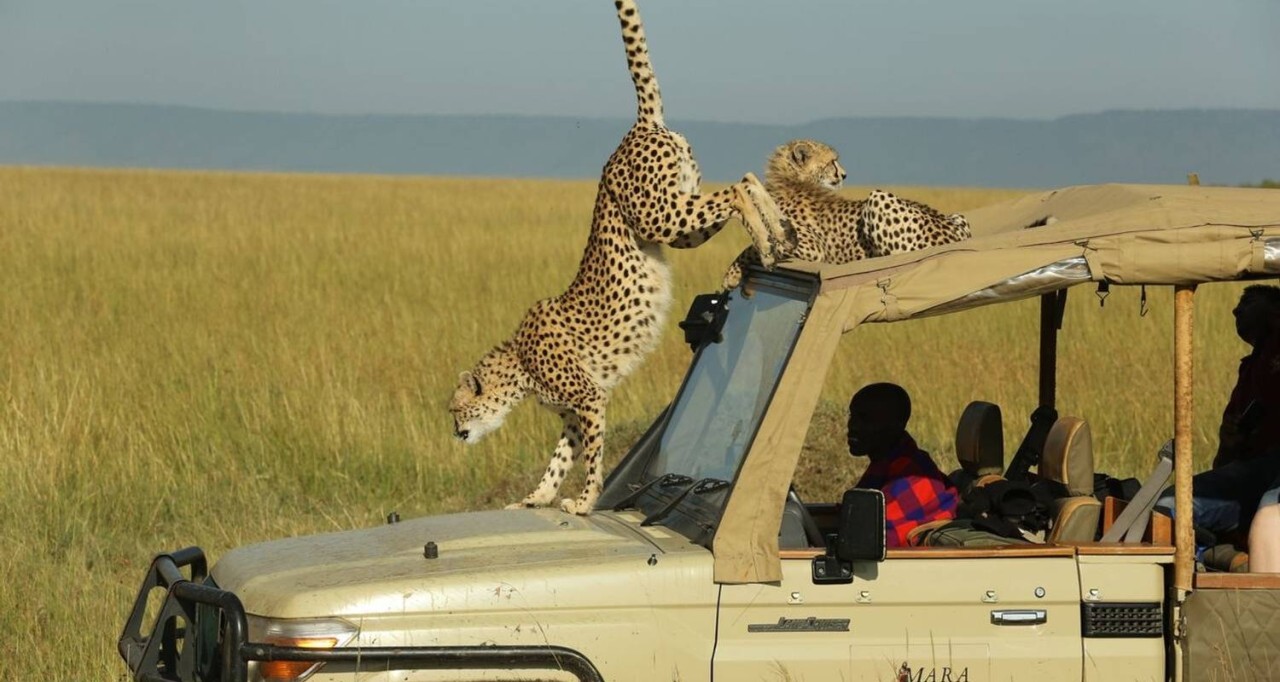One of nature’s most spectacular phenomena, the wildebeest migration through the Serengeti and Maasai Mara, captivates observers with its sheer scale and drama. This annual event, involving over 1.5 million wildebeest along with hundreds of thousands of zebras and gazelles, is a massive movement across ecosystems in search of fresh grazing grounds and water. This article delves into the details of the migration in both the Serengeti and the Masai Mara Wildebeest Migration, exploring the best times and places to witness this natural wonder and the unique aspects of each location.
Understanding the Migration Cycle
The wildebeest migration is a continuous cycle, dictated primarily by the rainfall patterns in the Serengeti-Mara ecosystem, which straddles the border between Tanzania and Kenya. The journey spans an impressive 800 kilometers and involves complex behaviors and strategies as these animals respond to the regional climate variations and the availability of water and pasture.
The Serengeti Migration
The migration begins in the Ngorongoro area of the southern Serengeti Wildebeest Migration in Tanzania, where the calving season takes place from late January to March. Over 500,000 calves are born within a few weeks, attracting a host of predators. As the rains end in May or early June, the herds begin moving northwest towards the fresher pastures of the Western Serengeti and the Grumeti Reserves.
One of the migration’s most dramatic events occurs when the herds cross the crocodile-infested Grumeti River in Tanzania and later the Mara River between July and September in the northern Serengeti. These crossings are fraught with danger, yet they are crucial for the survival of the herds as they seek greener pastures.
The Maasai Mara Migration
By July or August, the herds begin to enter Kenya’s Maasai Mara, where the grass is lush and water-abundant. The Mara offers a slightly different ecological niche, with its rolling grasslands and meandering rivers, providing the herds with the resources needed to regain their strength after the challenging journey north.
In the Maasai Mara, the spectacle continues with dramatic river crossings and the constant presence of predators like lions, cheetahs, and hyenas, which capitalize on the migration to feed their young. The migration cycle is completed when the herds start moving south again to the Serengeti around October, as the short rains begin, rejuvenating the pastures of the south.
Ecological Significance
The wildebeest migration plays a critical role in maintaining the ecological balance in the Serengeti-Mara ecosystem. This movement helps to ensure that no single area becomes overgrazed, and it redistributes nutrients across vast distances, benefiting a wide array of other species.
Impact on Predators
The migration significantly affects the life cycles of the region’s predators. Lions, cheetahs, leopards, and hyenas time their mating and birthing cycles around the migration, ensuring that food is plentiful when offspring are born.
Supporting Biodiversity
The wildebeest contributes to biodiversity by affecting plant growth patterns and participating in seed dispersal. Their hooves churn the earth, helping with seed embedding and aeration of the soil, which promotes plant growth.
Experiencing the Migration: Safari Tips
Witnessing the wildebeest migration is a top bucket list item for many wildlife enthusiasts and photographers. Here’s how to plan for the ultimate safari experience.
Best Times to Visit
- Serengeti: For calving, visit from late January to March. For river crossings, aim for June through September.
- Maasai Mara: The best time to see the herds is from August to October, especially for river crossings and predator interactions.
Choosing a Safari Tour
Opt for a reputable tour operator who not only provides expert guides who know the best spots for viewing the migration but also practices sustainable tourism to help preserve this natural spectacle for future generations.
Photography Tips
- Gear: Bring along a good quality zoom lens to capture close-ups of crossings and predator-prey interactions.
- Timing: Early mornings and late afternoons offer the best light for photography.
- Positioning: Listen to your guide to position yourself safely and responsibly during wildlife interactions.
Cultural Interactions
Enhance your safari experience by including visits to local Maasai communities. Many safari tours offer cultural tours where you can learn about the Maasai way of life, their traditions, and their relationship with the natural world.
Conclusion
The wildebeest migrations in the Serengeti and Maasai Mara are among the most awe-inspiring natural events on the planet. By visiting these iconic destinations, travelers not only witness this incredible phenomenon but also contribute to the local economies and conservation efforts that keep this ecosystem vibrant and healthy. Whether you’re an avid birder, a wildlife photographer, or a nature lover, the migrations offer an unparalleled experience that resonates long after the journey ends.







